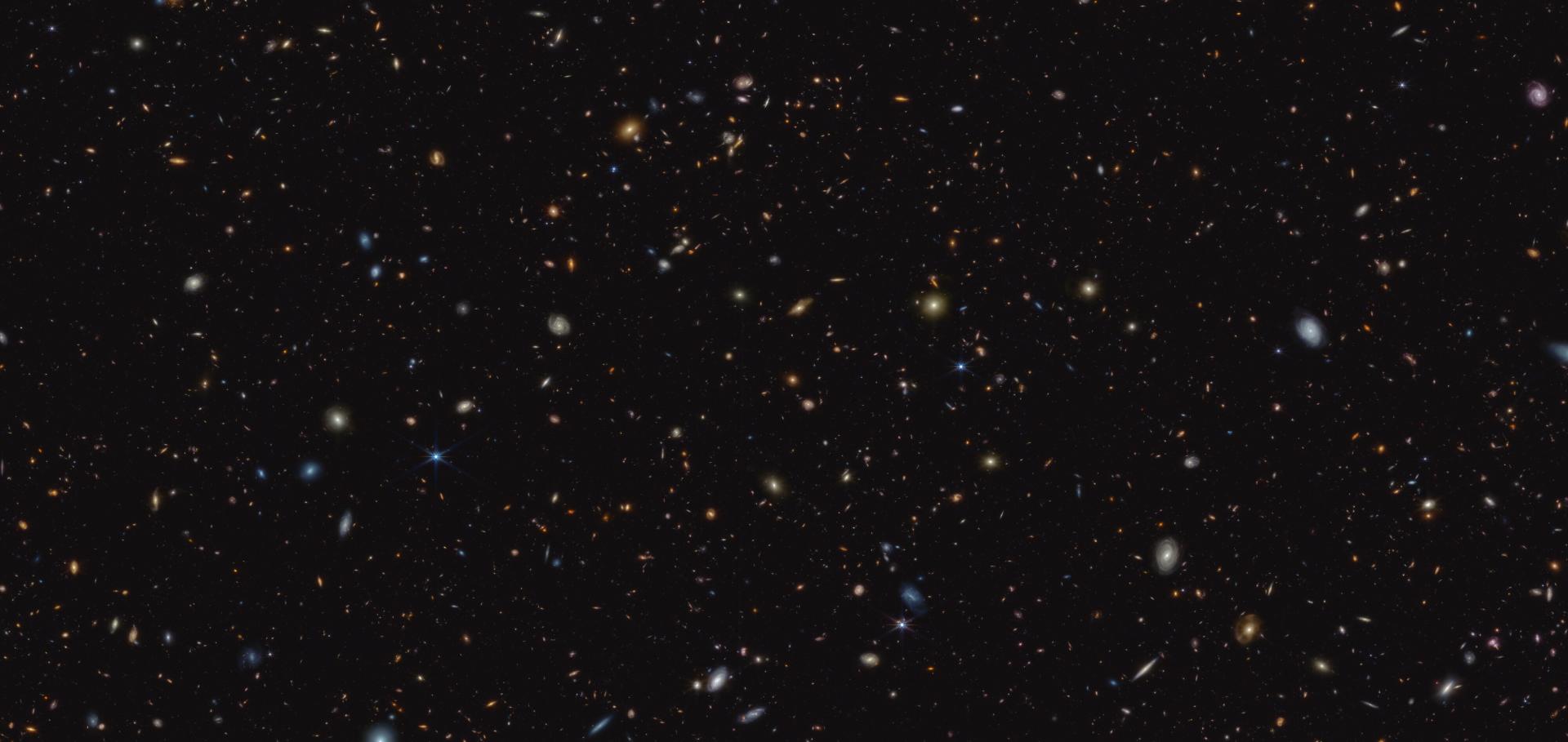Ultraviolet spectra of extreme nearby star-forming regions --- approaching a local reference sample for JWST
ArXiv 1706.00881 (2017)
Abstract:
Nearby dwarf galaxies provide a unique laboratory in which to test stellar population models below $Z_\odot/2$. Such tests are particularly important for interpreting the surprising high-ionization UV line emission detected at $z>6$ in recent years. We present HST/COS ultraviolet spectra of ten nearby metal-poor star-forming galaxies selected to show He II emission in SDSS optical spectra. The targets span nearly a dex in gas-phase oxygen abundance ($7.8<12+\log\mathrm{O/H}<8.5$) and present uniformly large specific star formation rates (sSFR $\sim 10^2$ $\mathrm{Gyr}^{-1}$). The UV spectra confirm that metal-poor stellar populations can power extreme nebular emission in high-ionization UV lines, reaching C III] equivalent widths comparable to those seen in systems at $z\sim 6-7$. Our data reveal a marked transition in UV spectral properties with decreasing metallicity, with systems below $12+\log\mathrm{O/H}\lesssim 8.0$ ($Z/Z_\odot \lesssim 1/5$) presenting minimal stellar wind features and prominent nebular emission in He II and C IV. This is consistent with nearly an order of magnitude increase in ionizing photon production beyond the $\mathrm{He^+}$-ionizing edge relative to H-ionizing flux as metallicity decreases below a fifth solar, well in excess of standard stellar population synthesis predictions. Our results suggest that often neglected sources of energetic radiation such as stripped binary products and very massive O-stars produce a sharper change in the ionizing spectrum with decreasing metallicity than expected. Consequently, nebular emission in C IV and He II powered by these stars may provide useful metallicity constraints in the reionization era.Modelling and interpreting spectral energy distributions of galaxies with BEAGLE
ArXiv 1603.03037 (2016)
Abstract:
We present a new-generation tool to model and interpret spectral energy distributions (SEDs) of galaxies, which incorporates in a consistent way the production of radiation and its transfer through the interstellar and intergalactic media. This flexible tool, named BEAGLE (for BayEsian Analysis of GaLaxy sEds), allows one to build mock galaxy catalogues as well as to interpret any combination of photometric and spectroscopic galaxy observations in terms of physical parameters. The current version of the tool includes versatile modeling of the emission from stars and photoionized gas, attenuation by dust and accounting for different instrumental effects, such as spectroscopic flux calibration and line spread function. We show a first application of the BEAGLE tool to the interpretation of broadband SEDs of a published sample of ${\sim}10^4$ galaxies at redshifts $0.1 \lesssim z\lesssim8$. We find that the constraints derived on photometric redshifts using this multi-purpose tool are comparable to those obtained using public, dedicated photometric-redshift codes and quantify this result in a rigorous statistical way. We also show how the post-processing of BEAGLE output data with the Python extension PYP-BEAGLE allows the characterization of systematic deviations between models and observations, in particular through posterior predictive checks. The modular design of the BEAGLE tool allows easy extensions to incorporate, for example, the absorption by neutral galactic and circumgalactic gas, and the emission from an active galactic nucleus, dust and shock-ionized gas. Information about public releases of the BEAGLE tool will be maintained on http://www.jacopochevallard.org/beagle.Effect of primordial non-Gaussianities on the far-UV luminosity function of high-redshift galaxies: implications for cosmic reionization
ArXiv 1410.7768 (2014)
Abstract:
[Abridged] Understanding how the intergalactic medium (IGM) was reionized at z > 6 is one of the big challenges of current high redshift astronomy. It requires modelling the collapse of the first astrophysical objects (Pop III stars, first galaxies) and their interaction with the IGM, while at the same time pushing current observational facilities to their limits. The observational and theoretical progress of the last few years have led to the emergence of a coherent picture in which the budget of hydrogen-ionizing photons is dominated by low-mass star-forming galaxies, with little contribution from Pop III stars and quasars. The reionization history of the Universe therefore critically depends on the number density of low-mass galaxies at high redshift. In this work, we explore how changes in the statistical properties of initial density fluctuations affect the formation of early galaxies. Following Habouzit et al. (2014), we run 5 N-body simulations with Gaussian and (scale-dependent) non-Gaussian initial conditions, all consistent with Planck constraints. By appealing to a galaxy formation model and to a population synthesis code, we compute the far-UV galaxy luminosity function down to M_UV = -14 at redshift 7 < z < 15. We find that models with strong primordial non-Gaussianities on < Mpc scales show a far-UV luminosity function significantly enhanced in low-mass galaxies. We adopt a reionization model calibrated from state-of-the-art hydrodynamical simulations and show that such non-Gaussianities leave a clear imprint on the Universe reionization history and electron Thomson scattering optical depth tau_E. Although current uncertainties in the physics of reionization and on the determination of tau_E still dominate the signatures of non-Gaussianities, our results suggest that tau_E could ultimately be used to constrain the statistical properties of initial density fluctuations.Encoding the infrared excess (IRX) in the NUVrK color diagram for star-forming galaxies
ArXiv 1309.0008 (2013)
Abstract:
We present an empirical method of assessing the star formation rate (SFR) of star-forming galaxies based on their locations in the rest-frame color-color diagram (NUV-r) vs (r-K). By using the Spitzer 24 micron sample in the COSMOS field (~16400 galaxies with 0.2 < z < 1.3) and a local GALEX-SDSS-SWIRE sample (~700 galaxies with z < 0.2), we show that the mean infrared excessInsights into the content and spatial distribution of dust from the integrated spectral properties of galaxies
ArXiv 1303.6631 (2013)


